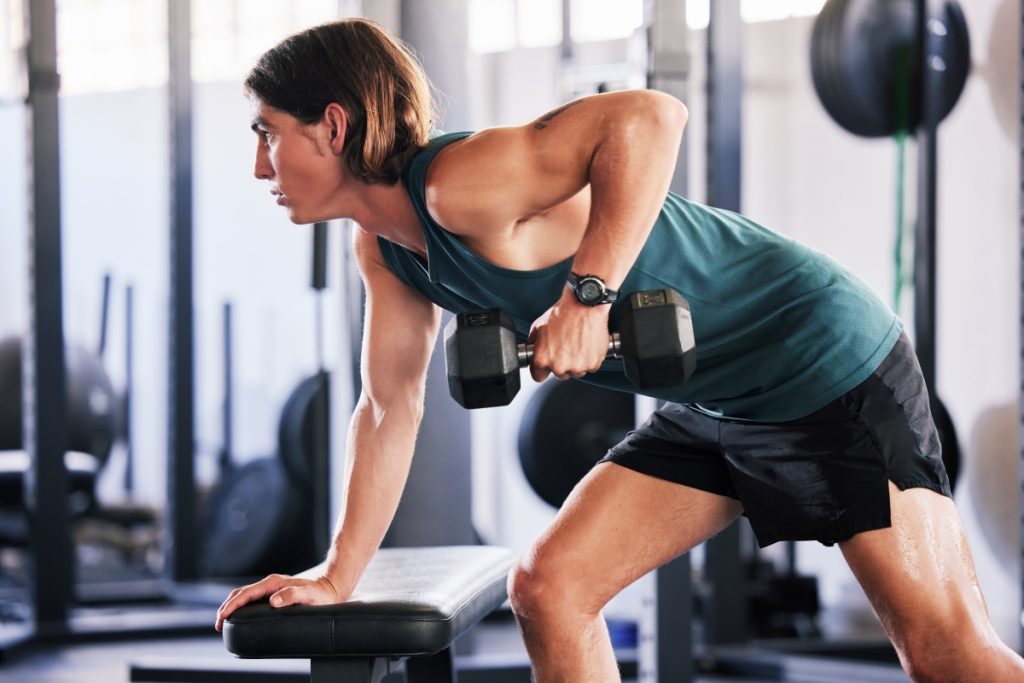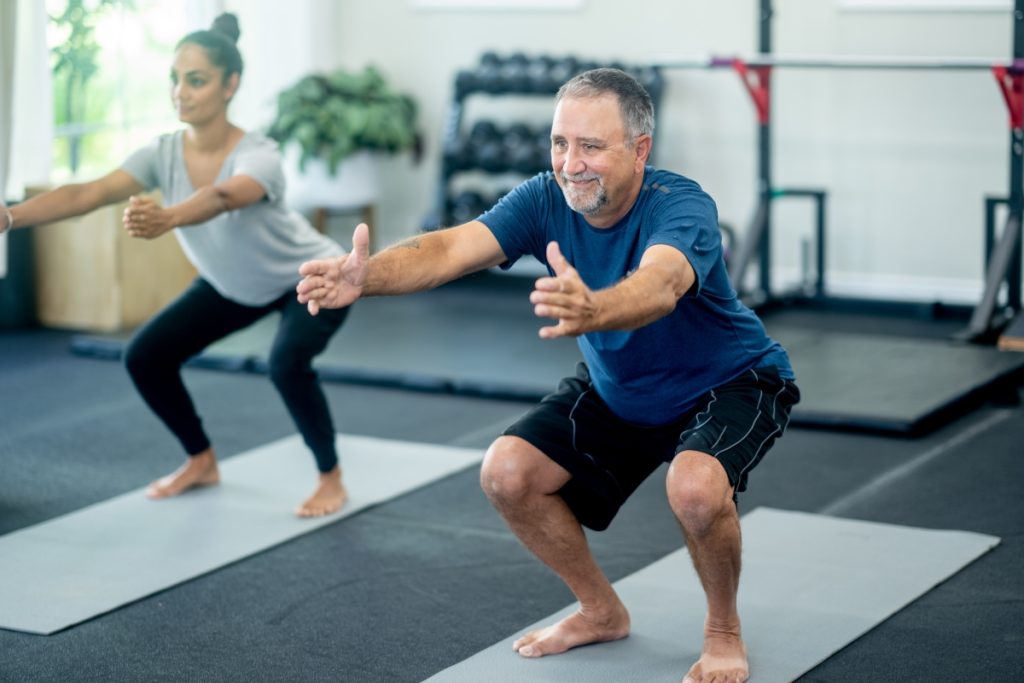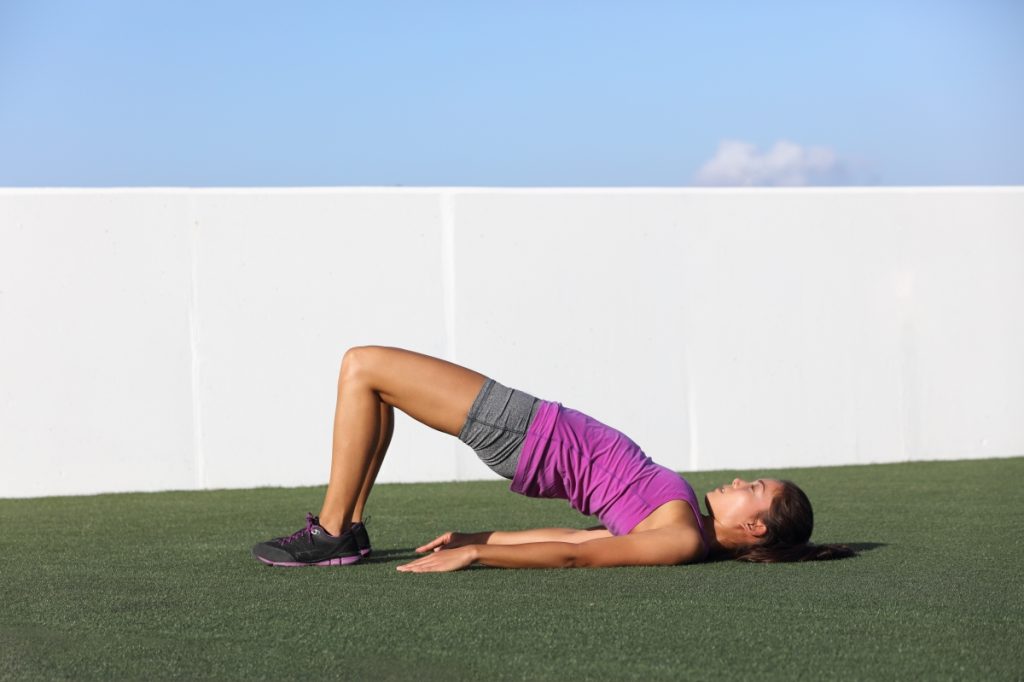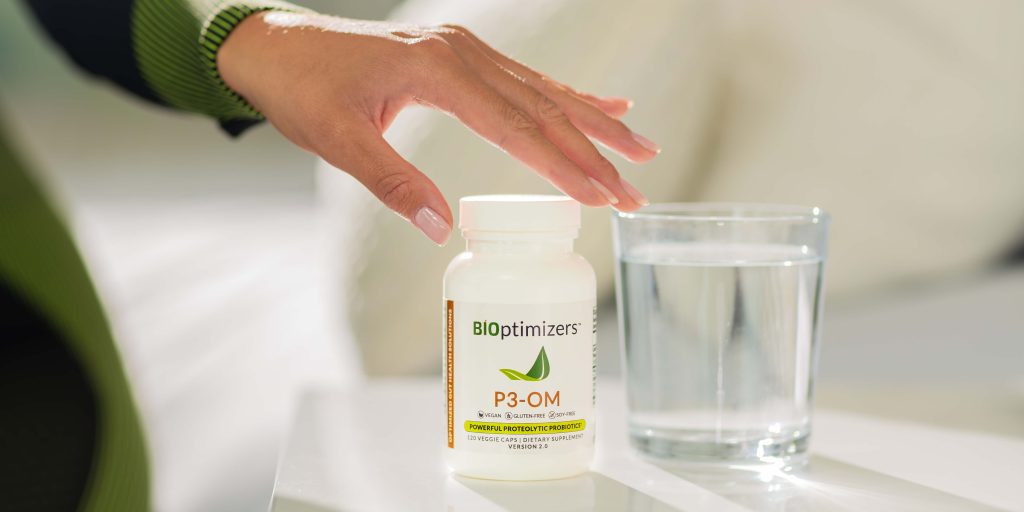Exercises to Burn Belly Fat for Beginners
Many of us would love to lose a few inches around our abdomen because it feels so unattractive.

While it is impossible to exclusively spot reduce fat from your abdominal region through targeted exercise, the importance of addressing belly fat goes beyond aesthetics. Belly fat is linked to cardiovascular and metabolic disorders.
The good news is that you can address the root causes of belly fat and combat it with the right nutrition, sleep, stress management, and exercise. And by exercise, we don’t mean abs exercise. In this article, we’ll briefly cover the root causes of belly fat gain, along with the best ways, including exercise, to address it.
What Causes Belly Fat or Lower Belly Pooch?

Belly fat comes in two forms:
- Visceral fat, which surrounds organs behind the abdominal wall. Visceral fat is far more concerning as it wraps around your vital organs and produces cellular signals that contribute to insulin resistance, high blood pressure, and inflammation.
- Subcutaneous fat, the softer fat just beneath the skin’s surface. This type of fat helps keep you warm.
Let’s break down some of the big contributors of lower belly fat:
Insulin Resistance
Insulin resistance is when your body’s cells respond less effectively to a hormone called insulin. Insulin helps bring glucose into your cells for energy. When you have insulin resistance, your pancreas needs to produce much more insulin to remove glucose from the bloodstream because your cells do not respond appropriately.
Factors that contribute to insulin resistance include:
- High-carb diets along with excess calories
- Chronic inflammation
- Stress or high-stress hormones
- Overall poor blood sugar control
- Having low muscle mass
- Sedentary lifestyle
Note that food alone doesn’t cause insulin resistance or belly fat–it’s more complex than that. As an illustrative example – Do you know skinny teenage boys who seem to be gaining no belly fat no matter how much carbs they eat?
Your cells take up glucose through specific protein doors called Glucose Transporter (GLUT). There are many types of GLUT, some of which respond to insulin, while others don’t.
GLUT4 is the most important one because it responds to insulin. You have it in your muscles, heart, fat tissue, and brain. Because muscles are the largest organ in your body, they are responsible for up to 80% of glucose uptake through GLUT4 transporters.
Typically when someone is insulin resistant, it’s their muscles that stop responding to insulin. They have less GLUT4 on the muscle cell surface.
Whereas, the belly fat cells have GLUT1 (which doesn’t need insulin) and more GLUT4 on the cell surface. This is why insulin resistance can lead to excess calories piling on in the belly fat and less elsewhere.
Stress and High Cortisol

Stress increases stress hormones like cortisol and adrenaline, both of which increase blood sugar.
Cortisol also increases appetite and food cravings – especially for foods high in sugar and fat. Back in the human hunter-gatherer days, these traits would prepare you for an impending famine to help you survive. Stress makes your body think it might soon have to go long periods without getting any food and so it wants to store as much energy as possible.
During the modern days when food is abundant, this response just increases body fat, especially in the midsection.
High cortisol can impact metabolism, lead to fatigue which can make it harder to get your workouts in, and promote inflammation in the body. All of these can have health consequences, especially when it comes to losing fat. There are many other mechanisms that cortisol can impact weight, especially belly fat, which we describe in detail here.
Fatty Liver
Fatty liver, a condition where too much fat builds up in liver cells, can be a big contributor to visceral (or belly) fat. Your liver helps process and metabolize nutrients from the foods that you eat, especially fructose and fat. When diets are high in sugars and unhealthy fats, this can put added stress on what your liver needs to process, causing your liver to struggle with the workload. This can promote the development of fatty liver.
When your liver becomes overwhelmed because of unhealthy diets, it can change how it regulates glucose and lipids. Consequently, it can increase fat molecules in your blood called triglycerides. These extra molecules are then stored in fat cells, especially around your abdomen as visceral fat.
Plus, always having high levels of triglycerides in the blood can lead to insulin resistance. This can further promote fat storage, especially around the abdomen. Insulin resistance can also make it challenging for your body to break down stored fat for energy.
Exercises to Burn Belly Fat
Can You Do Only Ab Exercises to Burn Abdominal Fat?
Unfortunately, no. You can feel temporary abdominal muscle pumps and a firmer stomach shortly after, but it’s not fat loss. In fact, exercising without changing nutrition is an unreliable way to lose fat.
In one study of 24 participants, 6 weeks of abdominal exercises alone did not make any significant difference in body weight or belly fat. Those who completed the program had better endurance in their abdominal muscles compared to those who did not do any exercise. Studies like this one have been done time and time again, with almost all of them coming to the same conclusion – spot reduction does not work.
So, while abdominal exercises do not specifically reduce belly fat, any exercise is better for health than nothing. Also, stronger abs and core help stabilize your body and reduce the risk of some injuries.

Why Are Muscle-Building Compound Exercises the Best for Burning Belly Fat?
Using and Building Muscles to Boost Insulin Sensitivity
Insulin resistance is a major contributor to belly fat. Also, muscles are responsible for 80% of your blood sugar control, partly because they’re the largest organ in your body. So, the best exercises for insulin resistance and belly fat are exercises that use muscles or build muscles. Also, the more muscles you have, the more insulin-sensitive you will be.
By definition, all exercises use some muscles. So, any movement is beneficial. As a general rule, it’s a good idea to move more throughout the day by all means you find reasonable and enjoyable.
Compound Functional Exercises Save Time
Now, what are the best exercises to help burn belly fat? The most productive way to use and build muscles is full-body compound exercises that engage multiple muscle groups at the same time.
These compound exercises are also functional, because they resemble day-to-day movements, such as squats, deadlifts, lunges, pushes, and pulls. In other words, these exercises (done with good form) help make you move better and function with less pain throughout your life.
Exercises, especially resistance training, help move GLUT4 to the surfaces of your muscle cells. This enables your muscles to take up glucose better, reducing their reliance on insulin. This effect can last for at least 16 hours!
As a result, you’ll be much better at handling glucose. When you eat carbs within 16 hours after each training session, the carbs are more likely to go into your muscles than your fat cells.
Helps Fatty Liver
Targeting big muscle groups can also promote liver health – exercise helps control the flow of certain fats to the liver, making your body more responsive to insulin. In fact, studies show that regardless of whether or not you lose weight from an exercise program, you’d still improve your liver health, especially if you have fatty liver.
Muscle Building Can Help Create Caloric Deficit
To lose belly fat, you’d have to create a caloric deficit. Most people simply think of eating less. However, building muscles requires a lot of calories. So, many people with extra body fat can lose fat while building muscles by eating maintenance calories while stepping up on proteins.
More Muscles = Higher Metabolism
Once you’ve built muscles, maintaining and using the muscles will take a lot of calories. Simply, your body will burn more calories even when you are not exercising, because muscle tissue is more metabolically active.
As a bonus, muscles are great tools for blood sugar regulation – they actively take up glucose from the bloodstream and store it to help support exercise later. This can help improve insulin resistance.

More Muscles = Better Postures and Curves
The lower belly fat will appear more prominent if you have bad posture, such as hunching over. A lot of sedentary people spend time sitting and in a flexed position. Exercises like crunches and chest exercises worsen this tendency and worsen your posture.
It can be counterintuitive but strengthening your backside will help tremendously with belly fat. First, your back, gluteal, and hamstring muscles are very large muscles that require a lot of calories to build. They also help tremendously with blood sugar.
Second, when these muscles are strong, they improve your posture, making you stand taller and giving you the flat abdomen look.
Most people neglect to train their posterior chain (aka the backside of their body) when trying to lose belly fat. This can cause imbalances, and lead to other issues later on. Therefore, it is important to train using a balanced program of full-body exercises to get the best benefits and minimize injuries.
- Vertical and horizontal pushes with pulls
- Squats (front of the legs) with glutes and hamstrings (back of the legs)
- Abs with back
Losing enough body fat for your six-pack to show will require months of caloric deficits, consistent training, and more. It takes a lot of ongoing dedication and commitment, which not everyone has.
Now, even if you choose not to go that far, having more muscles will provide the frame under the fat so that your abdomens will appear flatter. You can also target-train muscles in certain areas, such as if you prefer rounder glutes or thicker arms.
Best Exercises That Help Burn Belly Fat
Let’s look at which exercises can be most effective:
1) Inverted Rows and Pullups
Inverted rows are an exercise that targets muscles of the back, including the lats, rhomboids, traps, and rear deltoids. This can help promote better posture and upper body strength. It also engages the core, which helps stabilize the body during this exercise which can help tone the midsection.
How to perform:
- Set up a bar at hip height or use a Smith machine.
- Lie on your back under the bar, grab it with an overhand grip (palms facing away), and extend your arms fully.
- Lift your chest towards the bar by pulling your shoulder blades together.
- Lower yourself back down with control.
Beginner modifications: You can perform the inverted row at a less steep angle, to make it a little easier, or start with higher-level bars.
2) Bent Over Rows

Bent-over rows can help develop muscles of the upper back, including the lats, rhomboids, and traps which can help improve posture and balance the upper body. It also recruits core muscles for stabilization, helping to define abdominal muscles.
How to perform:
- Stand with feet shoulder-width apart, holding a dumbbell in each hand.
- Hinge at your hips, keeping your back straight, and lower your torso until it’s almost parallel to the ground.
- Pull the dumbbells towards your chest, squeezing your shoulder blades together.
- Lower the dumbbells back to the starting position with control.
Beginner modifications: you can use lighter weights to start, and slowly increase them as you become more comfortable. You can also perform one arm at a time so that you can slow down and focus on your form while stabilizing with your other hand on a bench.
3) Deadlifts and Their Easier Variations

Deadlifts target your posterior chain (aka the back of your body). It activates major muscle groups, including your hamstrings, glutes, and lower back, and can promote strength and muscle development in these areas.
Your core must be engaged during the entire movement to help protect your lower back. By doing so, you improve core strength and improve overall core muscle function.
How to perform:
- Stand with feet hip-width apart, a barbell in front of you.
- Hinge at your hips, keeping your back straight, and grip the barbell with hands just outside your knees.
- Lift the barbell by straightening your hips and knees simultaneously.
- Lower the barbell back to the ground with control.
Beginner modifications: you can start with lighter weights or just your body weight until you successfully nail down your form.
4) Squats

Squats are a superstar when it comes to strength training. It engages many large muscle groups, including your quadriceps, hamstrings, and glutes. This helps promote full body strength and muscle development. While you may not think of squats as a core exercise, they require quite a bit of core engagement!
How to perform:
- Stand with feet shoulder-width apart.
- Lower your hips back and down as if sitting in a chair, keeping your chest up and back straight.
- Go as low as your flexibility allows, ideally until your thighs are parallel to the ground.
- Push through your heels to return to the starting position.
Beginner modifications: start learning the correct technique by squatting just your body weight. You can also use a chair or bench for support while learning the movement.
Many people do need a bit of mobility and stability training before they can safely do a deep squat with heavy weights. So, consider working with a strength and conditioning coach to learn to squat correctly and safely.
5) Glute Bridges or Hip Thrusts

This exercise is great for beginners, as it is performed on the ground. It targets the glutes and hamstrings, but also activates many stabilizing muscles in your back. This can help balance out your core and contribute to your overall strength.
How to perform:
- Lie on your back with your knees bent and feet flat on the ground.
- Lift your hips towards the ceiling by squeezing your glutes.
- Hold the position briefly at the top.
- Lower your hips back down with control.
Beginner modifications: begin with using just your body weight. Focus on mastering the movement before adding any resistance.
6) Lunges

Lunges are what we typically call a “functional movement”. This is because you likely perform some variation of this exercise just going about your daily life. Think going up stairs – you need to step forward with one foot, pushing off your back leg.
Lunges are great for engaging the quadriceps, hamstrings, and glutes. It also requires weight transfer, which can help improve balance and requires core activation to be done successfully.
How to perform:
- Stand with feet together.
- Take a step forward with one foot, bending both knees to form 90-degree angles.
- Push off the front foot to return to the starting position.
- Repeat on the other leg.
Beginner modifications: you can practice the movement by stabilizing yourself using the wall or the back of a chair. Start with reverse lunges, which put less pressure on the knee joint before attempting walking lunges.
7) Push-Ups

Push-ups are notoriously tricky to master – but they are one of the best full-body exercises that you can do! This movement activates a ton of muscle groups, including your chest, shoulders, and triceps. Core engagement is also critical for helping you maintain a straight body position during the exercise.
How to perform:
- Start in a plank position with hands slightly wider than shoulder-width apart.
- Lower your body towards the ground by bending your elbows.
- Push back up to the starting position.
Beginner modifications: you can make pushups easier by performing them on your knees, or against the wall. Once you build up strength, you can either move further down the wall or attempt them from your toes.
8) Overhead Presses

The overhead press focuses on shoulders and traps, helping define and balance your upper body. When lifting anything overhead, your core muscles engage to help stabilize your body and prevent your lower back from injury.
How to perform:
- Stand with feet hip-width apart, holding dumbbells at shoulder height.
- Press the dumbbells overhead, extending your arms fully.
- Lower the dumbbells back to shoulder height with control.
Beginner modifications: start with light weights until you learn the correct form. You can also perform the movement sitting down, which can reduce pressure on your core and ensure you maintain a correct, upright posture.
Many people do not have the shoulder stability and mobility to safely perform overhead exercises. Thus, it’s a good idea to work with a strength and conditioning coach to screen for these problems and correct them.
8) HIIT
HIIT stands for high-intensity interval training. A type of cardio, HIIT alternates between short bursts of activity and periods of lower-intensity exercise or rest. The goal of this style of exercise is to push your body to work at a maximum effort during short intervals, followed by allowing it time to recover.
HIIT workouts can be great when you are short on time and can be just as effective at improving cardio levels compared to more steady-state style routines. The intensity of the intervals can elevate your heart rate and metabolism, increasing calorie burn both during and after you are done with the workout. This can help promote healthy blood pressure and insulin sensitivity. HIIT also seems to be really effective at promoting fat loss, especially around the abdomen.
Here is how a HIIT workout is typically structured:
- Warm-up: 5-10 minutes of light aerobic activity to increase heart rate and warm up muscles.
- Intervals: short bursts (usually between 20 seconds to 1 minute) of very intense exercise.
- Recovery period: follow up each intense interval with a short recovery, usually between 10-30 seconds.
- Repeat intervals: most HIIT exercises are completed for 4-8 rounds but this can vary depending on your fitness level.
- Cool down: end the workout with 5-10 minutes of low-intensity exercise and stretching.

Some examples of exercises that can be done as part of a HIIT workout include sprints, jumping jacks, burpees, high knees, and cycling sprints. But, it doesn’t really matter what specific exercise you do, as long as your heart rate gets up and you feel like you are pushing your body. It’s also possible to be sore after.
While HIIT can be great for most people, some people might want to be a little cautious before incorporating a lot of these sessions into their routine. For example, it can further increase cortisol if you already have high cortisol and belly fat from it. When you are already dealing with high-stress levels, added physical stress from these intense workouts can further add to your stress load.
The body needs sufficient time to recover after high-intensity exercise. When stress levels are high, the body’s ability to recover may be compromised, leading to an increased risk of overtraining, fatigue, and potential burnout. It doesn’t mean you should never do HIIT, but you might find that limiting sessions to 1-2x/week can be healthier and more effective for you.
Abs Exercises to Perform
Although spot reduction via exercise is not possible, there are still benefits to including core and ab exercises into your routine. Having a strong core is more than just about what size jeans you wear, it can provide functional advantages to your overall health. Since your midsection is where many of your muscles meet, a strong core can ensure you perform all other exercises correctly and reduce your risk for injury.
Here are some of the most important core exercises to include in your routine. These exercises are more functional and less likely to cause muscle imbalances.
1) Plank

Like a push-up, the plank involves holding the same starting position. But, instead of lowering your body towards the floor, you just maintain your position. This type of static hold is called isometric – your muscles must be engaged to hold your position, but the muscle length does not change, and no joints move.
While you may think that the plank exercise is strictly for abs, you are also working the shoulders, chest, back, and leg muscles. As a bonus, this move helps to improve posture when done regularly.
How to perform:
- Begin by laying on your stomach on the floor, with your elbows directly beneath your shoulders and forearms.
- Engage your core, straighten your legs, and position your toes on the floor.
- Maintain a straight line from your head to your heels (avoid sagging or arching your back) and hold.
- Keep your gaze in a neutral position, looking at the floor.
- To start, try and maintain your hold for shorter durations and gradually increase as you build strength.
Beginner modifications: There are many ways to modify this exercise depending on your fitness level. You can perform them from your knees, against a wall, or from your elbows. All these variations can reduce how much weight is being placed on your core. You can also begin by holding it for shorter periods of time, 15-30 seconds, before progressing to longer holds.
2) Side Plank

Similar to a standard plank, side planks activate your major ab muscles and your obliques – the ab stabilizers on the side of your body.
How to perform:
- Lie on your side with your elbow directly beneath your shoulder and forearm on the ground.
- Stack your feet on top of each other and straighten your body.
- Lift your hips, creating a straight line from your head to your heels.
- Keep your core engaged and your shoulder directly above your elbow.
- Hold for your desired time, and then do the same on the alternate side.
Beginner modifications: you can bend your bottom leg and place your knee on the ground for added support, or perform against the wall for added stability.
3) Pallof Press
The Pallof press works all your primary abdominal exercises and also targets your shoulders, back, and hips. It can help enhance stability and engage both sides of your core to resist rotational forces.
How to perform:
- Attach a resistance band to a sturdy anchor point or use a cable machine.
- Stand perpendicular to the anchor point with the band at chest height.
- Hold the band with both hands at chest level.
- Extend your arms fully, pressing the band away from your chest.
- Resist the band’s pull by engaging your core and preventing rotation.
- Return the hands to your chest with control.
Beginner modifications: you can start with lighter resistance bands as you build strength, or perform exercise with a shorter range of motion until you get the hang of the movement.
4) Kettlebell Swings

Kettlebell swings are great for activating your entire core, especially the lower back and glutes. The movement requires explosive hip movement, engaging your core for stabilization and it develops power and endurance through the entire posterior chain. It is important to do this movement correctly, as incorrect technique can increase your risk for injury.
How to perform:
- Stand with your feet slightly wider than shoulder-width apart, holding a kettlebell with both hands in front of you.
- Hinge at your hips, keeping a slight bend in your knees, and swing the kettlebell back between your legs.
- Thrust your hips forward, using the momentum to swing the kettlebell to shoulder height.
- Maintain a flat back throughout the movement, engage your core, and allow the kettlebell to swing naturally without lifting it with your arms.
Beginner modifications: get the hang of this movement first by using a very light kettlebell or no weight at all. Focus on the hip hinge movement. Avoid bringing the kettlebell overhead.
5) Diagonal Chops
Diagonal chops engage your obliques and ab muscles in a dynamic manner, and require coordination between your upper and lower body. This movement helps improve rotational strength, making it a great functional movement to include in your ab routine.
How to perform:
- Stand with your feet shoulder-width apart, holding a weight (dumbbell or medicine ball) with both hands.
- Begin with the weight at one hip, and diagonally lift it across your body towards the opposite shoulder.
- Rotate your torso as you lift the weight and engage your core.
- Return to the starting position with control.
Beginner modifications: Use a lighter weight or no weight to start, or perform the movement using a smaller range of motion until you get more comfortable.
6) Around the World
Around the World is a targeted exercise for all core muscles, but also your shoulders and lats. It engages the midsection in a stabilizing manner, challenging your body across multiple planes of movement.
How to perform:
- Stand with feet shoulder-width apart, holding a dumbbell in both hands.
- Circle the dumbbell around your body in a circular motion.
- Keep your core engaged and maintain a tall posture.
- Perform the movement for the desired number of repetitions, then switch directions.
Beginner modifications: start by using a very light weight to get the feeling of the movement, and then slowly progress up as you get comfortable.
Can Cardiovascular & Endurance Training Help With Belly Fat?

Cardio is crucial for health, though it sometimes gets a bad rap. For some people with cortisol belly fat, more cardio may increase belly fat. Also, only doing cardio exercises tend to cause you to lose muscles that you don’t use as you lose weight. However, combining both cardio and resistance training can be a powerful way to lose belly fat.
In one study over 10 weeks, researchers compared endurance training (like running or cycling) to resistance training only, to see how it impacts body fat. The endurance group lost body fat and weight, while the resistance group gained muscle mass. This is not to say that one is more important than the other – in fact, using both cardio and weights might give you the best results.
Another study assessing a 12-week program combining cardio with abdominal strength training exercises had similar findings. Those who did the program three times per week had significant decreases in waist circumference, waist-to-hip ratio, and abdominal skinfold measurements. They conclude that combining both cardio and strength training is important for improving body composition and overall health.
If you love your cardio activities like walking, swimming, cycling, or hiking, keep doing them in between your strength training sessions.
A general guideline is to aim for 150 minutes per week of moderate-intensity cardiovascular exercise.
Exercises to Avoid
Now that we have gone over which exercises are important to include, let’s look at some that you should avoid. The reason that these made our list is because of how we tend to live our lives – being in a flexed position.
This is a consequence of having sedentary jobs, where we are seated with our hip flexors having to maintain that constant 90-degree angle between our torso and legs. When we do ab exercises that promote this flexed position, it can lead to black pain, with hip flexors having to handle the brunt of most of the following movements.
Crunches and Other Crunch Variations
Crunches (and their many variations) primarily target the rectus abdominis muscle. This muscle plays a key role in flexing the spine. While this muscle is important for core stability, narrowing in to target only this muscle can neglect four other abdominal muscle groups that are components of having a well-rounded core, leading to imbalances. Plus, repetitive spinal flexion can potentially lead to strain in your neck and lower back, especially when they are done using poor form.
Jackknifes
Similarly to crunches, jackknifes zero in on the rectus abdominis, which neglects other core muscles. This exercise also often puts increased strain on the hip flexors, which can already be constricted from excessive sitting. Plus, jackknifes do not increase functional strength for real-life movements compared to other exercises. This limited translation to everyday life makes them low on our list for improving core strength.
Conclusion
Exercise is beneficial and can help reduce visceral fat, even though you don’t lose weight. However, exercising alone is not very effective at weight loss, but it becomes exponentially more effective combined with a caloric deficit from your diet and manipulations like eating more protein. To learn more about getting your diet right to lose fat, especially belly fat, check out The Ultimate Nutrition Bible.
- Ibrahim MM. Subcutaneous and visceral adipose tissue: structural and functional differences. Obes Rev. 2010;11(1):11-18. doi:10.1111/j.1467-789x.2009.00623.x
- Freeman AM, Acevedo LA, Pennings N. Insulin Resistance. StatPearls Publishing; 2023.
- Merz KE, Thurmond DC. Role of skeletal muscle in insulin resistance and glucose uptake. Comprehensive Physiology. 2020;10(3):785-809. doi:10.1002/cphy.c190029
- Mueckler M. Insulin resistance and the disruption of Glut4 trafficking in skeletal muscle. J Clin Invest. 2001;107(10):1211-1213. doi:10.1172/jci13020
- Chadt A, Al-Hasani H. Glucose transporters in adipose tissue, liver, and skeletal muscle in metabolic health and disease. Pflugers Arch. 2020;472(9):1273-1298. doi:10.1007/s00424-020-02417-x
- Hewagalamulage SD, Lee TK, Clarke IJ, Henry BA. Stress, cortisol, and obesity: a role for cortisol responsiveness in identifying individuals prone to obesity. Domest Anim Endocrinol. 2016;56:S112-S120. doi:10.1016/j.domaniend.2016.03.004
- Sargeant JA, Gray LJ, Bodicoat DH, et al. The effect of exercise training on intrahepatic triglyceride and hepatic insulin sensitivity: a systematic review and meta‐analysis. Obes Rev. 2018;19(10):1446-1459. doi:10.1111/obr.12719
- Magkos F. Exercise and fat accumulation in the human liver. Curr Opin Lipidol. 2010;21(6):507-517. doi:10.1097/mol.0b013e32833ea912
- Houghton D, Thoma C, Hallsworth K, et al. Exercise reduces liver lipids and visceral adiposity in patients with nonalcoholic steatohepatitis in a randomized controlled trial. Clin Gastroenterol Hepatol. 2017;15(1):96-102.e3. doi:10.1016/j.cgh.2016.07.031
- Kumashiro N, Erion DM, Zhang D, et al. Cellular mechanism of insulin resistance in nonalcoholic fatty liver disease. Proc Natl Acad Sci U S A. 2011;108(39):16381-16385. doi:10.1073/pnas.1113359108
- Vispute SS, Smith JD, LeCheminant JD, Hurley KS. The effect of abdominal exercise on abdominal fat. J Strength Cond Res. 2011;25(9):2559-2564. doi:10.1519/jsc.0b013e3181fb4a46
- Borghouts LB, Keizer HA. Exercise and insulin sensitivity: A review. Int J Sports Med. 2000;21(1):1-12. doi:10.1055/s-2000-8847
- van der Windt DJ, Sud V, Zhang H, Tsung A, Huang H. The effects of physical exercise on fatty liver disease. Gene Expr. 2018;18(2):89-101. doi:10.3727/105221617×15124844266408
- Maillard F, Pereira B, Boisseau N. Effect of high-intensity interval training on total, abdominal and visceral fat mass: A meta-analysis. Sports Med. 2018;48(2):269-288. doi:10.1007/s40279-017-0807-y
- Dote-Montero M, Carneiro-Barrera A, Martinez-Vizcaino V, Ruiz JR, Amaro-Gahete FJ. Acute effect of HIIT on testosterone and cortisol levels in healthy individuals: A systematic review and meta‐analysis. Scand J Med Sci Sports. 2021;31(9):1722-1744. doi:10.1111/sms.13999
- Perez-Gomez J, Vicente-Rodríguez G, Ara RI, et al. Effect of endurance and resistance training on regional fat mass and lipid profile. Nutr Hosp. 2013;28(2). doi:10.3305/nh.2013.28.2.6200
- Akinremi AA, Sanya AO, Sanusi AA. Effects of combined aerobics and abdominal strengthening exercises on abdominal adiposity in sedentary adults. Afr J Med Med Sci. 2013;42(4). Accessed February 9, 2024. https://pubmed.ncbi.nlm.nih.gov/24839733/






